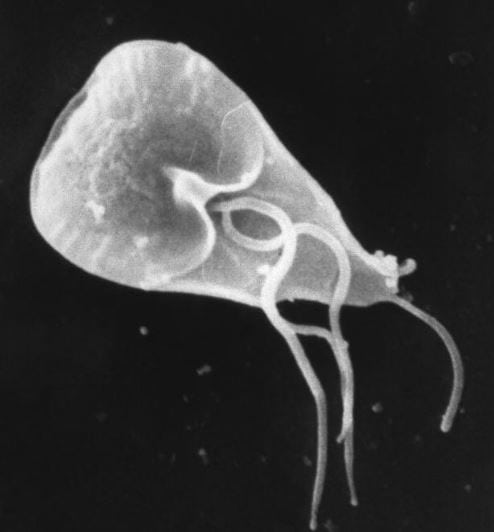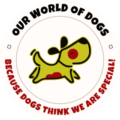Introduction
What to Feed a Dog with Giardia:
When your beloved canine friend is diagnosed with Giardia, it’s natural to feel concerned about their health and well-being. Giardia is a common intestinal parasite known for causing gastrointestinal distress in dogs, including symptoms like diarrhea, vomiting, and weight loss. These symptoms can severely impact your dog’s quality of life and overall health. What to feed a dog with Giardia becomes a critical question in such cases because the right diet can significantly influence their path to recovery. Proper nutrition is essential not only for supporting the immune system but also for repairing the intestinal damage caused by this parasite. In this comprehensive guide, we will explore the specific dietary needs and nutritional strategies that can help manage and alleviate the symptoms of Giardia in dogs. Our goal is to provide you with detailed, practical advice on choosing the best foods to help your dog regain their health and happiness, ensuring they bounce back to their playful and energetic selves.
Understanding Giardia
Dietary Management: What to Feed a Dog with Giardia

Giardia, a minuscule yet formidable parasite, primarily targets the small intestine of dogs, leading to a host of uncomfortable and potentially serious symptoms. This flagellate protozoan, scientifically known as Giardia duodenalis, is microscopic and thus undetectable to the naked eye, yet highly effective in disrupting a dog’s digestive system. Infection in dogs occurs when they ingest cysts, the infectious form of the parasite, typically from contaminated water, food, or feces. These cysts transform into trophozoites in the intestine, where they attach to the intestinal wall and cause significant disruption.
Dogs afflicted with Giardia commonly exhibit a range of symptoms including persistent diarrhea that may be unusually smelly and greasy, vomiting which contributes to dehydration, noticeable weight loss due to malabsorption of nutrients, and abdominal pain, causing discomfort and distress. Managing these symptoms effectively hinges on understanding what to feed a dog with Giardia. The diet plays a critical role as Giardia interferes with the normal absorptive processes of the intestinal lining, reducing enzymatic activity necessary for digestion and inducing an inflammatory response that further deteriorates gut function.
Addressing Giardia requires a two-pronged approach: medical and dietary. Firstly, prompt and accurate veterinary intervention is crucial, where a veterinarian will typically prescribe antiprotozoal medications aimed at eradicating the parasite. Secondly, alongside medical treatment, implementing a carefully considered diet is vital. Knowing exactly what to feed a dog with Giardia should be gentle on the dog’s digestive system, helping to reduce the severity of symptoms like diarrhea and abdominal discomfort. Suitable foods to feed a dog with Giardia might include bland, easily digestible foods such as boiled chicken, rice, and specially formulated canine gastrointestinal diets. These dietary adjustments can aid significantly in the healing process, providing the dog with essential nutrients while its body recovers from the Giardia infection and responds to medical treatment. Such dietary management not only supports recovery but also helps to strengthen the dog’s immune response against future infections.
Key Nutritional Considerations:
When choosing the right diet for your dog with Giardia, consider the following essential factors:
a. Easily Digestible Ingredients:
Opt for foods that are easy on your dog’s sensitive digestive system. Here’s how to prepare these ingredients:
- Boiled Chicken and Rice:
Boil boneless and skinless chicken until it’s thoroughly cooked and no longer pink.Cook white rice separately according to package instructions.Mix the boiled chicken with cooked rice in a ratio of 1:2 (one part chicken to two parts rice). - Mashed Yellow Pumpkin:
Yellow pumpkin is rich in nutrients and can be cooked and mashed.Remove the seeds and skin, then cut the flesh into small pieces.Steam or boil the pumpkin until it becomes soft and easily mashable.Mash the cooked pumpkin and mix it into your dog’s regular food.
b. Low-Fat Diet:
Giardia can often lead to fat malabsorption, so feeding a low-fat diet can help alleviate diarrhea and reduce discomfort. Look for dog foods labeled as “low-fat” or consult with your veterinarian for specific recommendations.
c. High-Quality Commercial Diets:
Choose high-quality commercial dog food brands known for their digestibility and nutritional value. These foods are typically well-balanced and formulated to support dogs’ overall health.
Homemade Diet Options to Feed a Dog with Giardia:
If you prefer preparing your dog’s meals at home, here are some homemade diet options to consider:
a. Boiled Chicken and Rice:
Boiled chicken and white rice are gentle on the stomach and provide easily digestible protein and carbohydrates. Remove the skin and bones from the chicken.
b. Mashed Yellow Pumpkin:
Yellow pumpkin is rich in nutrients and can be cooked and mashed. Remove the seeds and skin, then cut the flesh into small pieces. Steam or boil the pumpkin until it becomes soft and easily mashable. Mash the cooked yellow pumpkin and mix it into your dog’s regular food.
c. Plain Pumpkin Puree:
Plain canned pumpkin (not pumpkin pie filling) is also a suitable choice, whether it’s made from orange or yellow pumpkin varieties. It’s rich in fiber and can help firm up loose stools.
d. Cooked Sweet Potatoes:
Sweet potatoes are an excellent source of vitamins and fiber.
Cook and mash them to create a tasty and nutritious addition to your dog’s diet.
Probiotics and Supplements:
In addition to a suitable diet, consider giving your dog probiotic supplements. Probiotics can help restore the balance of beneficial bacteria in the gut, which may have been disrupted by Giardia infection. Consult your vet for appropriate probiotic recommendations.
Conclusion:
When your dog is dealing with Giardia, knowing what to feed a dog with Giardia is crucial for their recovery. Feeding a diet that is easily digestible, low in fat, and high in quality, including yellow pumpkin and other nutritious ingredients, can help alleviate symptoms and support their healing process. Always consult with your veterinarian for personalized advice on what to feed your dog with Giardia, as individual cases may vary. With the right care and a well-balanced diet, your furry friend will be on the road to recovery in no time.
For Pet Tips please keep reading Our World of dogs Blog.


Want to know about resistant Giardia
My dogs have been in metronidazole then Panacur and still have loose motions
They play with each other and give it to each other I think
Dear Bailey, Thank you for your question. Managing resistant Giardia in dogs can be complex. Here are key points and advanced recommendations:
Resistant Giardia
Drug Resistance: Giardia can develop resistance to metronidazole and fenbendazole (Panacur). Persistent symptoms indicate potential resistance.
Combination Therapy: Consider combining metronidazole (25 mg/kg BID) and fenbendazole (50 mg/kg SID) for 5-10 days. Adding nitazoxanide (25 mg/kg BID) may help in resistant cases.
Extended Duration: Treatments may need to be extended beyond typical durations. Follow your vet’s guidance.
Probiotics: Saccharomyces boulardii or Enterococcus faecium can aid in gut flora restoration.
Environmental Management
Sanitization: Use a 1:32 bleach solution, quaternary ammonium compounds, or steam cleaning to disinfect environments. Giardia cysts can survive in the environment for months.
Hygiene: Regularly wash bedding, toys, and bowls with hot water and detergent. Bathe dogs to remove cysts from fur.
Monitoring and Follow-Up
Fecal Exams: Conduct serial fecal flotations to confirm eradication. Use zinc sulfate centrifugal flotation or ELISA tests for accuracy.
Diet and Hydration: Maintain a bland, easily digestible diet. Ensure adequate hydration to counter diarrhea-induced dehydration.
Veterinary Consultation
Close veterinary supervision is essential for advanced diagnostics and tailored treatments, including potential use of alternative therapies like paromomycin.